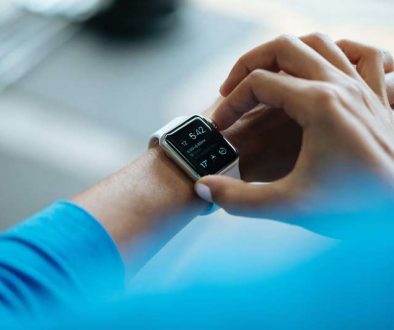Standing vs. Sitting: Which Is Best?
One of the new trends in office design is the standing desk. The goal of these standing desks is to get people to sit less. Some authors have gone so far as to equate sitting to smoking (Buckley, et al., 2015).
Research presented at the British Psychological Society’s Annual Occupational Conference (Duncan, Kazi and Haslam, 2015) stated that, in a typical working week, people spend four hours and 41 minutes per day sitting at their desks. (And that doesn’t count the time they spend seated in their cars, while eating, and watching television.) Whatever the final numbers are, it is fair to say that we spend a lot of time sitting. Would standing more be beneficial to our health? Let’s take a look…
Standing: Pros & Cons
One of the alternatives to sitting all day is standing while at work. Some of the advantages of standing are:
- Reduced risk of obesity
- Reduced risk of cancer
- Lower long-term mortality risk
- Reduced risk of cardiovascular disease
- Reduced risk of type 2 diabetes and other metabolic problems
It takes more energy (calories) to stand than it does to sit. Livestrong states that standing uses 20-50 more calories per hour than sitting, depending upon your size. That equates to 8-20 pounds during the course of a year (www.livestrong.com, 2014).
Given that Americans tend to be larger today than in years past, standing makes some sense, particularly if you’re trying to lose weight.
Unfortunately, standing isn’t a panacea. Prolonged standing also comes with a health risk. It can lead to:
- Back pain
- Leg pain
- Varicose veins
- Cardiovascular problems
Anyone who spends the work day standing in place (e.g., grocer checkers) can tell you about the problems they encounter as a result of prolonged standing.
The Best of Both Worlds?
Alternating between standing and sitting is probably a healthier alternative. It has been suggested that workers should stand for two hours each work day and gradually increase to four hours (Biswas, et al., 2015). That’s half the day standing and half sitting.
Stability Balls
One relatively new and somewhat revolutionary trend has been the use of the gym ball (aka, stability ball) as a chair. Using a stability ball as an office chair strengthens the core muscles, similar to the use of a backless chair or stool. The freedom of movement that comes from using a stability ball may also decrease any confined or constrained body postures that frequently occur at workstations.
Livestrong (www.livestrong.com, 2015) states that the stability ball is a piece of exercise equipment that is used for strength training and to improve balance and stability. The website indicates that replacing the traditional office chair with a stability ball has become increasingly popular because of the potential for improved health, posture and strength. Some of the potential benefits of sitting on a ball include:
- It encourages “active” sitting.
- It improves the endurance of sitting and postural muscles.
- It improves sensory perception.
- It acts as a stimulus for the regulation of posture.
- It allows an alternate loading and unloading of the intervertebral disks.
- It improves blood circulation.
- It improves the effectiveness of all the organ systems.
The following tips are offered in order to use a stability ball as an office chair;
- Use the correct size and make sure that it is fully inflated. Properly fitted, the thighs should be parallel to the floor and the knees should be at 90 degrees.
- Perform normal workday activities while on the ball.
- Stay on the ball as long as is comfortable, then return to the normal chair. Begin with 20-30 minutes, then increase the time gradually.
- Use a stability base to keep the ball stable.
The bottom line: When sitting on a stability ball, you can’t sit still. The ball forces the body to constantly adjust to the forces of gravity. Sitting on such a labile surface is a constant challenge to the musculoskeletal system and can actually be quite fatiguing, if you’re not used to it. Consequently, it is suggested that yo shouldn’t throw your normal chairs out.
I have used a stability ball as an office chair and like it more than the standing desk. However, I am of the opinion that the stability ball shouldn’t be a total replacement to the traditional office chair. Instead, it should be used in conjunction with the chair.
Movement Is Key
Rather than just sitting or standing, it would seem that movement is the key to a long and healthy life. One author looked at individuals in Okinawa, Japan (Buettner, 2014). He found that they tend to sit on the floor, rather than in chairs. They apparently go from sitting to standing approximately 30 times each day (constantly moving). Buettner discusses the advantages of going from a sitting to a standing position.
As an aside, some of the healthiest and oldest individuals come from Okinawa. Perhaps there is a connection.
A survey performed a number of years ago (Belloc and Breslow, 1972) attempted to identify common denominators in healthy octogenarians. One of the factors identified was regular physical activity (30-45 minutes every day of the week). There were no marathon runners or extreme athletes. They just kept moving, similar to the individuals in Okinawa.
Closing Thoughts
The standing desk is a reasonable alternative to sitting at work. One alternative is to use a treadmill as a desk. This encourages movement and activity during the workday.
However, standing rather than sitting should not be considered an ideal alternative. Instead, it would appear that changing positions is the critical link. Some time spent sitting and some spent standing is probably best.
In addition, the use of a stability ball seems to be a reasonable alternative to sitting on a traditional office chair. While the stability ball is a positive modification, one of the advantages is the limited amount of time an individual can spend on it. It almost forces a change of position.
Finally, it would appear that movement is the key to reducing problems. Rather than sit or stand for long periods, time spent moving from sitting to standing (and back again) is advantageous.


